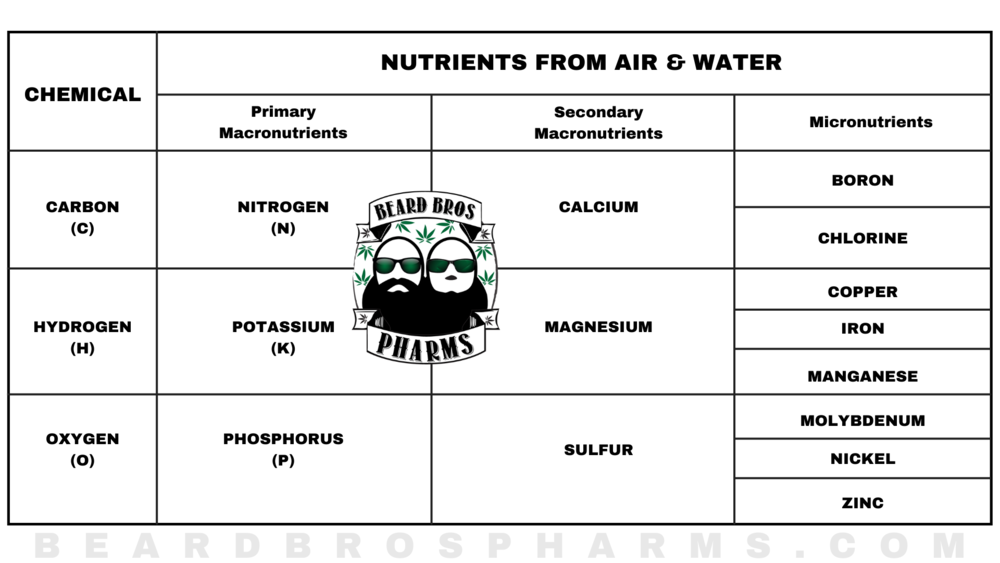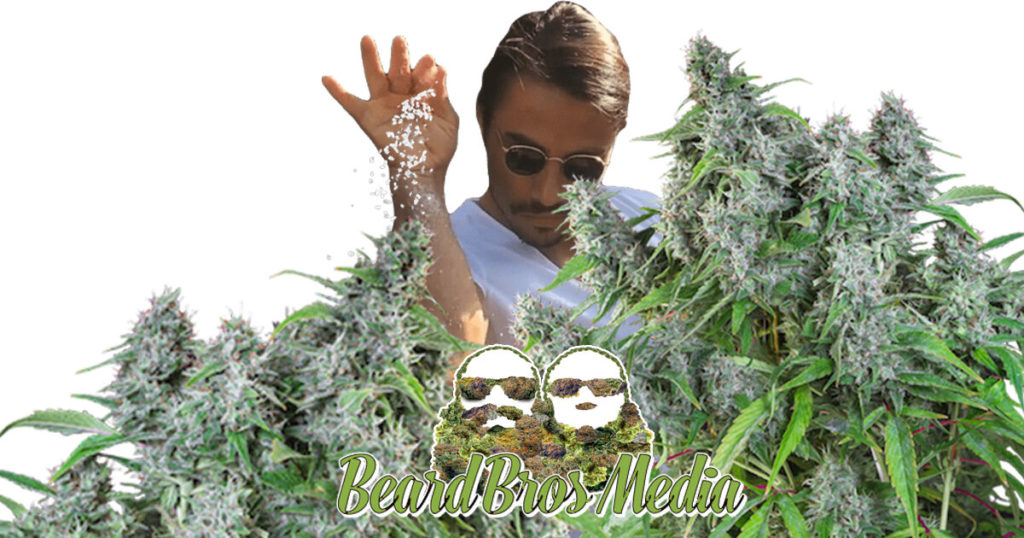
The memes between fans of soil-grown, microbe-fed cannabis, and the typically hydroponically-grown and commercial-nutrient-fed cannabis are pure heat these days and, let’s face it, there are usually at least a few strands of truth woven into the fabric of anything funny.
This is not a new battlefield for the Try-Hards. Growers have been arguing amongst themselves ad nauseum for years in a war of words over which method of cannabis cultivation produces a superior product at harvest.
So, which one is better? Hydro or soil?
We will get to that, but for this article, we will only be looking at indoor cultivation. As a part of our ongoing series on the benefits of growing your own weed at home, we will dig in, past the memes, and discuss the pros and cons of growing with ‘salt’ versus growing with soil.
FAKE IT TILL YOU MAKE IT
There are a lot of reasons why a person would choose to grow their cannabis indoors instead of outside or in a greenhouse. Many growers liken the experience to “playing god” in that you can have nearly complete control over climate and environmental conditions, light/dark scheduling, and feeding.
Regardless of your religious beliefs, 99% of homegrows are going to have hurdles or limitations that one would think gods could avoid. From nosy neighbors to dangerous local laws, lack of proper space, or ventilation, or heating and air… these can all be deterrents to growing your own weed when they ought to be clues about how to grow your own weed.
There are, of course, many ways to grow a pot plant that each come with a varying degree of difficulty. Usually, the higher the level of difficulty – or risk – the greater the reward, whether that be increased yield, quality, or ideally both.

Extreme Cream by Beard Bros. Pharms
It is really no secret that we grow our commercial cannabis indoors, hydroponically here at Beard Bros. Pharms, so it may not come as a huge surprise to see us say that we truly believe that when done properly from start to finish, a skilled cultivator can kick out bountiful harvests of seemingly identical nuclear grade indoor weed in either soil or hydro. Ien fact, many of your favorite brands are jarring up both and most custies will never know the difference.
As with our past articles, this will not be a How-To Guide on growing weed using these two methods, but rather a comparative look at the pros and cons of each, from the perspective of a cannabis connoisseur curious about cultivating from the comfort of home.
Since it is what we know best, let’s get salty first.
YOU DOWN WITH NPK?
We should start by saying that unless you are pretty familiar with your local hardware store and at least somewhat outfitted with some tools and the skills to use them, setting up and maintaining a hydroponic grow on your own can be a very daunting task.
The good news is, if you are able to get it up and running successfully, most days will require more monitoring of the system than actual maintenance.
Soilless substrates typically contain little or no essential plant nutrition. Instead, the plant (and the grower) relies on a chemical blend of carefully portioned nutrients to feed upon by way of its overexposed root system.
This blend will vary from garden to garden, and even from strain to strain, but it is commonly referred to as an NPK blend, referring to the three main macronutrients that all plants need to survive – Nitrogen. Potassium, and Phosphorus. These break down into 11 more secondary macro and micronutrients the abundance or absence of which will determine how well a plant thrives.

Companies like Heavy 16 provide an array of such water-soluble fertilizer fuels packed with that full spectrum of nutrients blended specifically to target certain stages of the plant’s growth cycle.
This form of feeding produces much faster results than traditional soil-fed farming, which along with artificial lighting is why you can pull multiple crops per year with an indoor hydro grow.
That speed has its own pros and cons, however. If your NPK ratio is off, perhaps from drastically over or underfeeding because you just followed the instructions on the bottle or emulated what you saw some guy on YouTube do in his garden, the negative results can show themselves quickly. If you don’t know how to counter them, they can ruin months of work in a matter of days.
So, now that we know that NPK controls plant growth, why do people refer to it as salt farming?
Ammonium, calcium and potassium nitrates, potassium and magnesium sulfates, and monopotassium phosphate (MKP) are six commonly used, water-soluble salts that cannabis farmers use to customize their NPK mix in order to account for variations like local water quality, the strain being grown, etc.
These supplementary salts deliver major nutrient boosts which, in turn, boosts yield and some would argue, the quality of the buds at harvest time.
Again, once all of this is dialed in for your particular set of circumstances, automation and experience will have you swimming in top-shelf homegrown weed likely sooner than you thought possible. Clearly though, both the costs and the learning curve will be significantly steeper going this route as a new grower.
Instead, it may pay to get back to the earth, first.
DON’T PANIC, IT’S ORGANIC…ISH
Mankind has been growing cannabis in soil for thousands of years but just as technology eventually moved the practice indoors for many farmers, the technology behind something as seemingly simple as soil has evolved as well into a term we now refer to as ‘living soil’.

Living soil is all about biodiversity in the dirt itself – an unseen but bustling society of microorganisms, bacteria, protozoa, and more that all exist in a symbiotic relationship with the plants above them, feeding their root systems with an all-natural NPK mixture that would instead come bottled from a manufacturer for most hydro growers. Producing and maintaining living soil is not an easy task, however, especially for beginners.
Because the speed at which the plant will uptake the nutrients from a soil substrate is much slower than that of a plant in a hydro environment, soil-based cannabis farmers are often wizards when it comes to brewing supplemental compost teas. These nutrient-rich concoctions can be altered and applied at will during different phases of plant growth to ensure that the soil remains “alive” so that the plant can thrive.
The term ‘organic’ is thrown around pretty loosely, especially when it comes to cannabis. Of course, with federal prohibition of the cannabis plant still in place, no weed farm is certified organic by the USDA, but there are organic standards that commercial cannabis farmers can strive toward, and so can you as a home cannabis grower.
When it comes to the ‘salt vs. organic’ meme war, most indoor farmers would consider soil-grown weed to be organic as long as the plants are fed with only natural, living (or once-living) additives, are pesticide-free, etc.
Without getting too nerdy, and at the risk of wrecking a hilarious meme war, technically ALL plants are fed with salts. Even if a soil-based cannabis farmer is only feeding pure water to their plants, that water is filtering down through the soil and extracting the naturally occurring water-soluble salts and delivering them to the plant’s roots.




(Fire memes by Jim Davis @OGHempire)
One of the biggest cons of growing cannabis indoors in a soil-based substrate, particularly as a new grower, is that signs of malnutrition take longer to reveal themselves, and then they take longer to remedy. With experience, this becomes less and less of an issue. It’s never easy, but it does get easier.
Another drawback to this form of farming is that you typically cannot get more than a few harvests out of one batch of soil, if even that. Yes, there are methods for no-till soil maintenance and perpetual harvesting, but those are more advanced than most new homegrowers are ready for. Disposing of old soil can be tricky depending on your living/growing situation.
THE CHOICE IS YOURS & THE TIME IS NOW
Will the first batch of homegrown weed that you harvest be the best you’ve ever seen or smoked? Who knows? What we do know is that there is no feeling quite like sparking up a joint full of flowers you took from seed to sesh.
We also know that our favorite indoor farmers are pretty much a 50/50 blend of ‘salt’ and ‘organic’ and once that weed is on the table, nobody is worried about where the NPK came from.
Whichever method you choose, try to find a genetically strong cultivar, then learn its language harvest after harvest. Put in the work, never cut corners, and you will be rewarded with a gift that truly does keep on giving.
Obviously, laws are subject to change and, obviously, Beard Bros. Pharms is NOT a legal adviser. Additionally, as is the case here in California, state law can often conflict with local laws, ordinances, or bans so be sure to brush up on the specific regulations for your particular municipality. Information contained in this website is intended as general educational information only. The information contained on this website is not legal advice. It should not be construed as legal advice and should not be relied upon as such. Obviously.
















